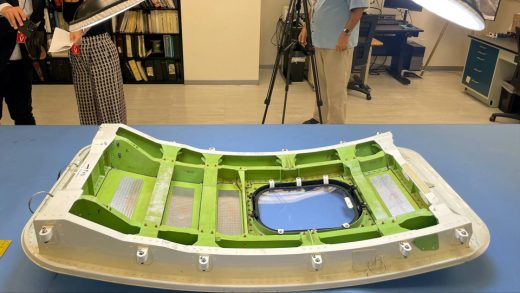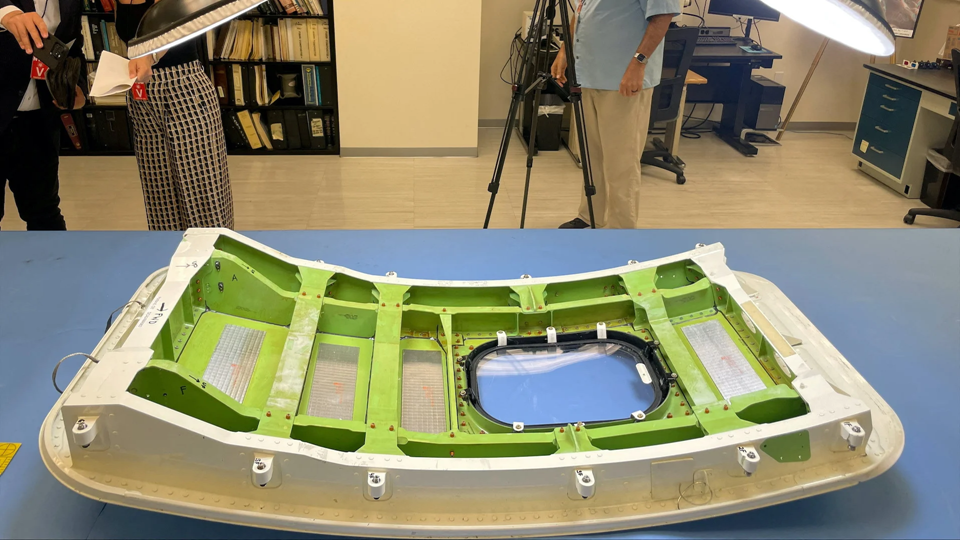Boeing is making design changes after January’s 737 MAX 9 door panel blowout
Boeing is making design changes after January’s 737 MAX 9 door panel blowout
The incident badly damaged Boeing’s reputation and led to the MAX 9 being grounded for two weeks, a ban by the FAA on expanding production, a criminal investigation and the departure of several key executives.
BY Reuters
Boeing said on Tuesday it plans to make design changes to prevent a future mid-air cabin panel blowout like the one in an Alaska Airlines 737 MAX 9 flight in January that spun the planemaker into its second major crisis in recent years.
Boeing’s senior vice president for quality, Elizabeth Lund said the planemaker is working on design changes that it hopes to implement within the year and then to retrofit across the fleet.
Investigators have said the plug in the new Alaska MAX 9 was missing four key bolts.
“They are working on some design changes that will allow the door plug to not be closed if there’s any issue until it’s firmly secured,” Lund said during the first of a two-day National Transportation Safety Board investigative hearing in Washington.
Lund’s comments followed questioning on why Boeing did not use a type of warning system for door plugs that the planemaker includes on regular doors that sends an alert if it is not fully secure.
The incident badly damaged Boeing’s reputation and led to the MAX 9 being grounded for two weeks, a ban by the FAA on expanding production, a criminal investigation and the departure of several key executives. Boeing has vowed to make key quality improvements.
The board also released 3,800 pages of factual reports and interviews from the ongoing investigation.
Boeing has said no paperwork exists to document the removal of four key missing bolts. Lund said Boeing has now put a bright blue and yellow sign on the door plug when it arrives at the factory that says in big letters: “Do not open” and adds a redundancy “to ensure that the plug is not inadvertently opened.” It also has new required procedures if the door plug needs to be opened during production.
A flight attendant described a moment of terror when the door plug blew out. “And then, just all of a sudden, there was just a really loud bang and lots of whooshing air, like the door burst open,” the flight attendant said. “Masks came down, I saw the galley curtain get sucked towards the cabin.”
Lund and Doug Ackerman, vice president of supplier quality for Boeing, are testifying Tuesday during the hearings scheduled to last 20 hours over two days. Ackerman said Boeing has 1,200 active suppliers for its commercial airplanes and 200 supplier quality auditors.
Lund said Tuesday Boeing is still building “in the 20s” for monthly MAX production – far fewer MAXs than the 38 per month it is allowed to produce. “We are working our way back up. But at one point I think we were as low as eight,” Lund told the NTSB.
Terry George, senior vice president and general manager for Boeing Program at Spirit AeroSystems, and Scott Grabon, a senior director for 737 quality at Spirit, which makes the fuselage for the MAX, also testified Tuesday.
Last month Boeing agreed to buy back Spirit AeroSystems, whose core plants it spun off in 2005, for $4.7 billion in stock.
The hearing is reviewing issues including 737 manufacturing and inspections, safety management and quality management systems, FAA oversight, and issues surrounding the opening and closing of the door plug.
Fuselage defects
In June, FAA Administrator Mike Whitaker said the agency was “too hands off” in its oversight of Boeing before January. FAA employees told the NTSB that Boeing employees did not always followed required processes.
Jonathan Arnold, Aviation Safety Inspector at the FAA, said a systemic issue he witnessed at Boeing’s factory was employees not following the instructions.
“That seems to be systemic where they deviate from their instructions. And typically, tool control is what I see most,” Arnold said.
Lund said before the Jan. 5 accident, every 737 fuselage delivered to Boeing had defects – but the key is making sure they are manageable. “What we don’t want is the really big defects that are impactful to the production system,” Lund said. “We were starting to see more and more of those kinds of issues, I will tell you, right around the time of the accident.”
National Transportation Safety Board chair Jennifer Homendy at one point expressed frustration with Boeing. “This isn’t a PR campaign for Boeing,” she said, urging the company to make clear what its policies were before the incident.
The interviews also addressed questions of factory culture, which has been under fire in congressional hearings. Whistleblowers have alleged that Boeing retaliated against people coming forward with safety concerns on the factory floor.
Boeing executive Carole Murray described various problems with fuselages coming from Spirit AeroSystems in the run-up to the accident. “We had defects. Sealant was one of our biggest defects that we had write-ups on,” she said. “We had multiple escapements around the window frame, skin defects.”
Michelle Delgado, a structures mechanic who worked as a contractor at Boeing and did the rework on the Alaska MAX 9 aircraft, told NTSB the workload is heavy and requires working long hours.
“When we’re very overwhelmed with work, it is pressing because with everything we’ve cut down on some personnel, so now it’s like in order for me to not have to deal with a worse situation tomorrow, I’d rather work a 12 to 13-hour shift to get it all done, for my sake, so I don’t have to deal with people the next day.”
Also in June, the NTSB said Boeing violated investigation rules when Lund provided non-public information to media and speculated about possible causes.
Last month, Boeing agreed to plead guilty to a criminal fraud conspiracy charge and pay a fine of at least $243.6 million to resolve a Justice Department investigation into two 737 MAX fatal crashes.
—David Shepardson, Allison Lampert, Abhijith Ganapavaram, Tim Hepher and Rajesh Kumar Singh, Reuters
(7)



